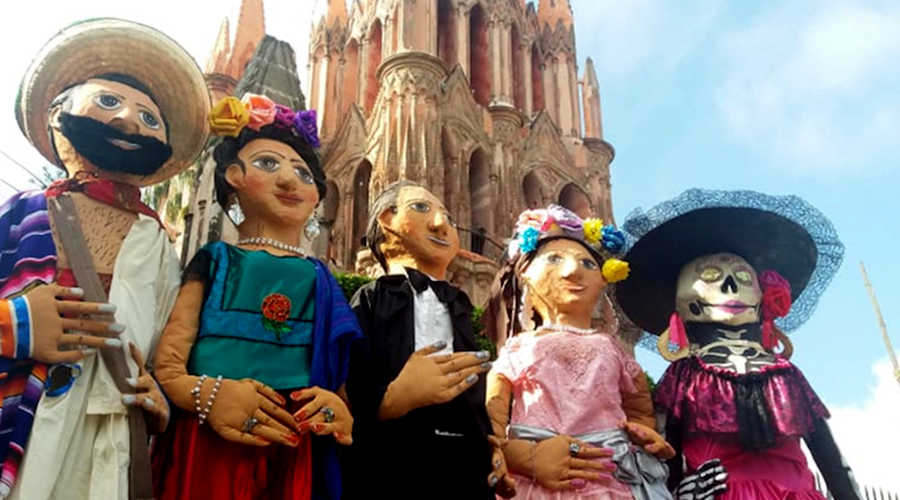The Mojigangas are giant puppets with figures of human beings, animals, or fantastic beings. They are made, mainly, of cardboard and can measure up to six meters in height.

Puppets are said to have been around since the dawn of civilization, not only as an object of entertainment but also as a means of education. The history of the Mojigangas is linked to the history of the theater. The first Mojigangas appeared in traveling theaters in Spain in the 16th and 17th centuries as a farce (a dramatic form in which the characters unfold in a caricature-like manner or fantastic situations).
The word Mojiganga has a burlesque and satirical meaning; They also convey the sensation of joy, fear, amazement, and a sense of imagination.
Various artistic techniques and different materials such as cardboard, paint, and fabric are used for its creation. Some are made based on a blacksmith frame to serve as a support on which layers of paper and paste are applied to form the expression of the character. Finally, decoration and accessories are added.
Among their characteristics, the Mojigangas usually have remarkable features, stocky or voluptuous bodies, some can be female representations with flowers and long eyelashes, with a very flirtatious touch, as well as male figures with funny details and a prominent mustache, and some even with a hat.
Currently, the Mojigangas of San Miguel de Allende are part of the traditions and have gained popularity in the famous “Callejoneadas” and in the weddings that are celebrated in the city.
If you are interested in living this experience, contact: https://mojigangas.com/

San Miguel Times
Newsroom
